Republished from the summer 2022 Wild Ones Journal with minor edits by staff.
By Barbara A. Schmitz
OK, I’ll admit I was a little jealous. I had slowly been transforming my yard into a Garden of Eden for birds and pollinators. And it had worked in that I was seeing a lot more bees, butterflies, dragonflies and other insects, as well as birds, fluttering throughout the yard and landing on my growing number of native plants.
But one thing wasn’t coming to my yard: toads. Don’t ask me why, but I love toads, and was jealous of my friend who had lots in her yard, despite not having as much native landscaping. So my husband got on board and we upped our efforts.
I live in Wisconsin, which is home to American toads (Anaxyrus americanus). But American toads can be found throughout almost all of the United States east of the Rocky Mountains, and their range extends north into central Canada and south into Mexico. In winter, they spend months burrowed deep in the soil. But once the temperature rises, you can hear their presence. And if you’re lucky, you just might see them, too.
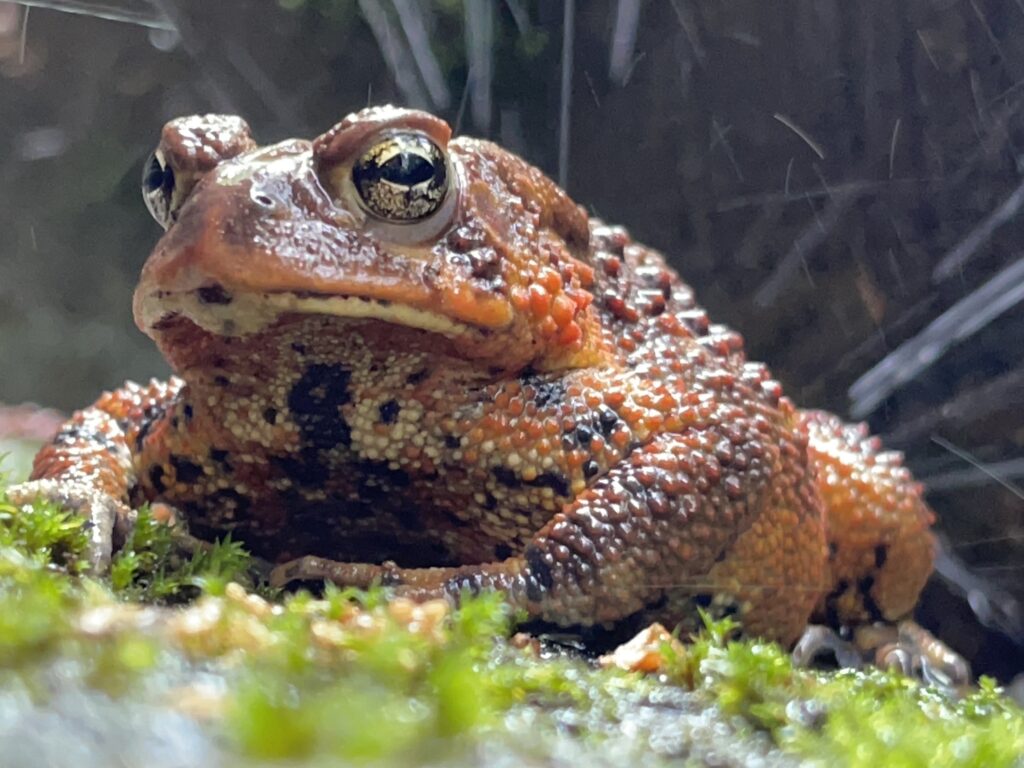
So last May, we added a little pond for them, made from the plastic cover of an old garbage can, and lined it with pebbles and stones. As more and more flowers bloomed, the pond became more and more hidden. We also added lots of places for toads to hide, in addition to the leaves and plants already there, cutting out notches on tree stumps that line our native plantings or building toad houses out of planks from an old cedar fence. But other things can be used to make toad houses too, from flower pots to stones and ceramics, according to the Welcome Wildlife website.
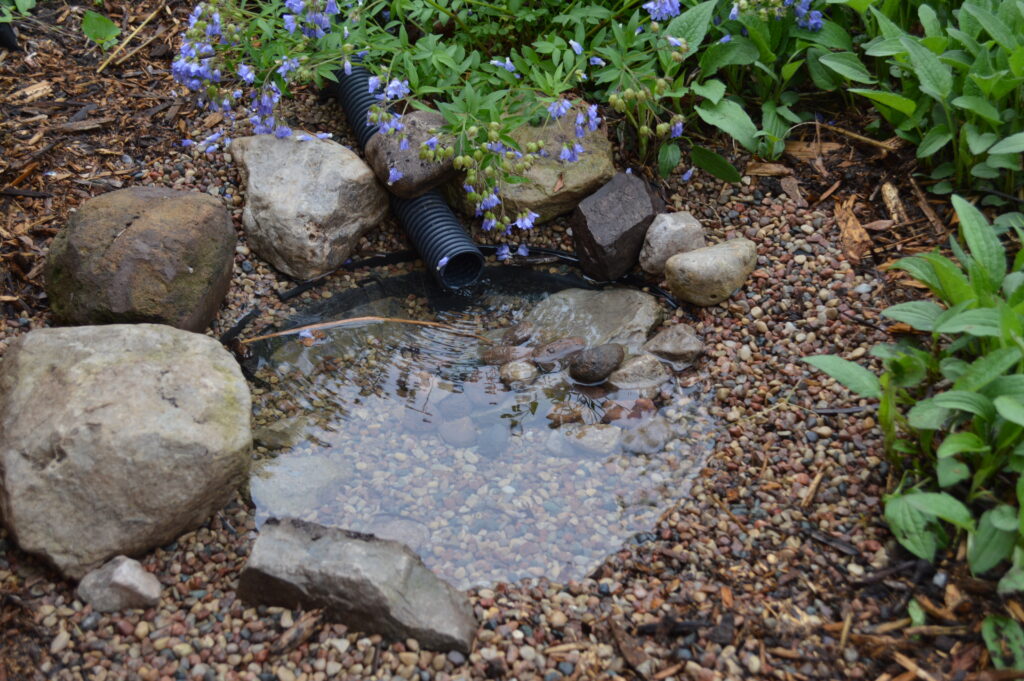
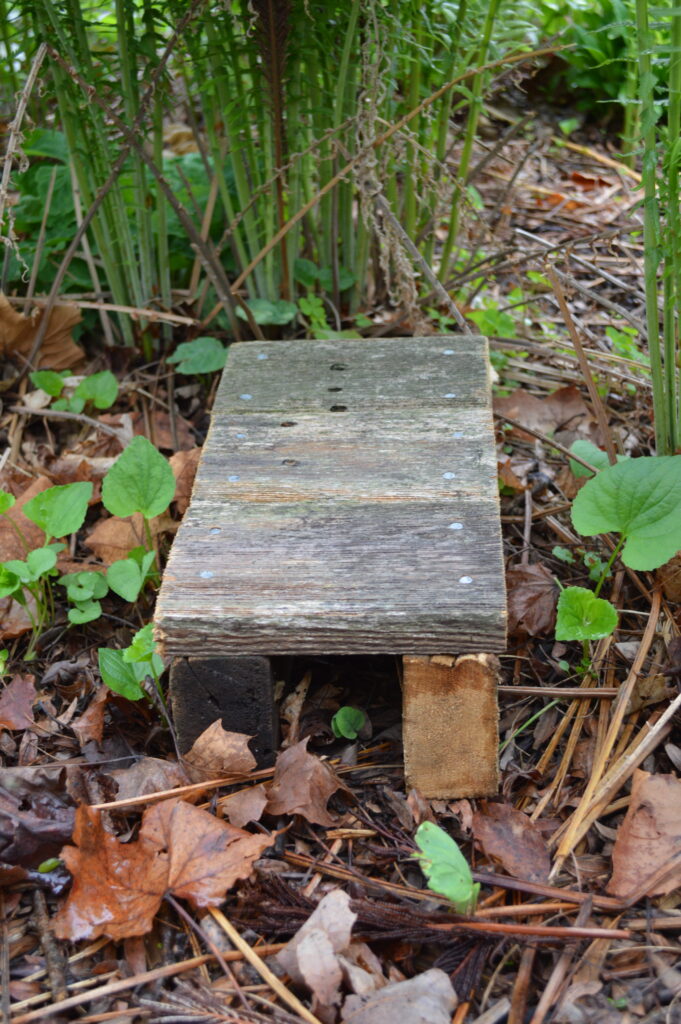
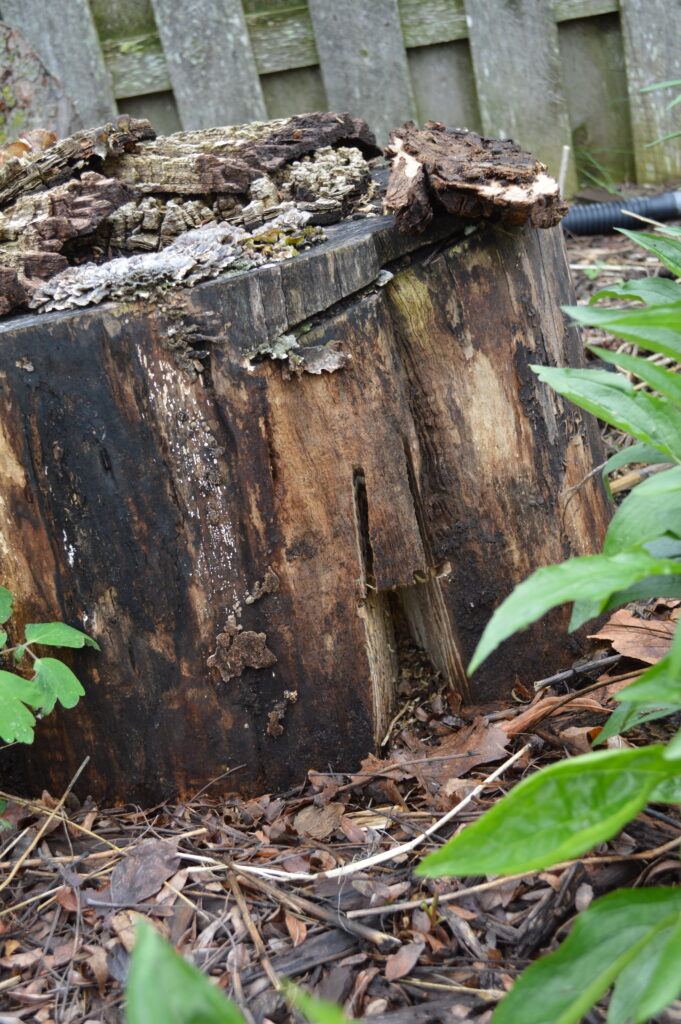
The American toad can easily be identified by its dry rough skin and large swellings behind the eyes (parotoid glands), according to the Wisconsin Department of Natural Resources. Its dorsal color can vary from brown to reddish to olive, with scattered dark spots, each encircling one to three wart-like bumps on the back.
Their thick skin, which traps in body fluids better than most amphibians, allows toads to live greater distances from water than most frogs. Toads live in a wide variety of habitats ranging from prairies to wetlands to forests. But they can also adapt to urban settings where they live in gardens and parks.
According to Pennsylvania State University, the American toad is active from April to November depending upon the local climate and weather conditions. During their active seasons, they typically spend daylight hours in their shallow soil burrows, under logs or within leaf piles. They emerge at night to actively feed on a wide variety of insects.
In their natural habitats, most American toads live for a year or less, though some toads may live for 5 to 10 years.
A toad’s main tool for food gathering is its tongue, which is long, sticky and rapidly extensible. American toads regularly eat flies, crickets, locusts, grasshoppers, bees, wasps, beetles, spiders, caterpillars, earthworms, slugs and snails. It is estimated that 88% of their prey are invertebrates that are classified as agricultural pests. In three months, a single toad will consume just under 10,000 insects!
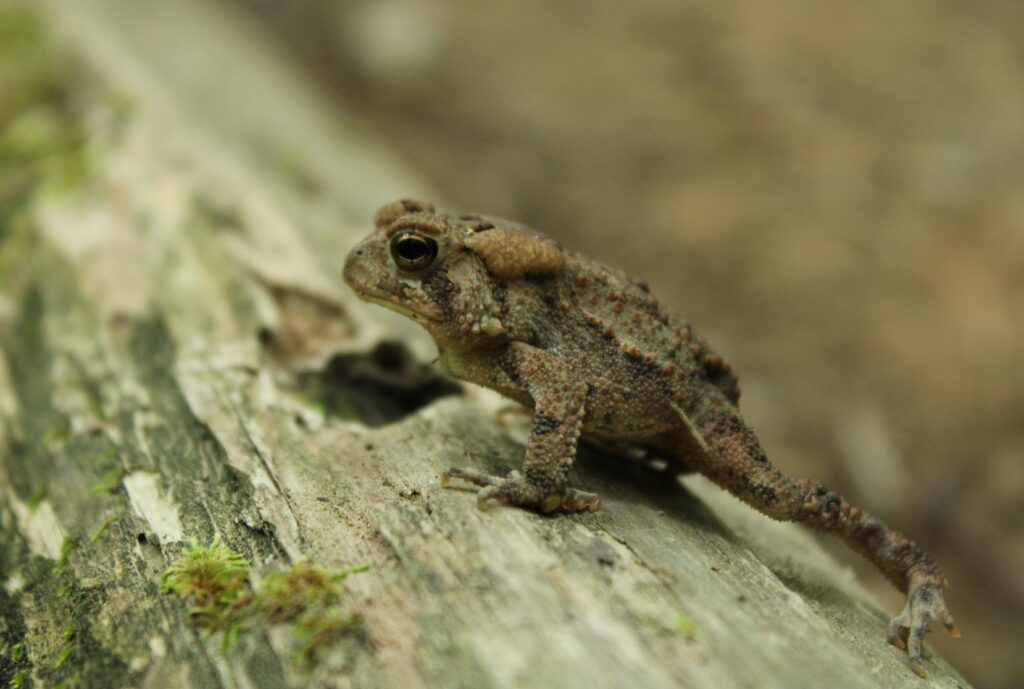
Knowing my impatience with toads finding our new backyard haven, my friend Kathy decided to speed up the process last summer. She told her 20-something-year-old son of our efforts, and during his next visit home, he captured two toads in the periphery of our yard and moved them into their new home in our habitat. Once released, they quickly jumped away and haven’t been seen since. But come this spring, there was no doubt. Those toads — or maybe others — were in fact, there. Their long, drawn-out, high-pitched, musical trill gave them away.
Schmitz, B. (Summer 2022). TOADally perfect: How to create toad habitat in your yard. Wild Ones Journal, 35(2) p. 34.
Attracting Toads to Your Landscape
Attracting toads to your garden naturally controls pests and enhances biodiversity, creating a healthier and more balanced ecosystem. Here are just a few more tips on how to attract toads to your garden.
- Provide Water Sources: Toads need water not only for drinking but also for breeding. Installing a small pond or water feature that is accessible with shallow sides can attract toads. Avoid using chemicals in the water to ensure it’s safe for them. It’s important to maintain water quality and easy access in and out of the pools as well.
- Create Hiding Places: Toads require shelter from predators and the elements. You can create hiding places with overturned pots, wood piles, or rock gardens. Leaving some areas of your garden a little wild can also provide natural shelter.
- Keep a Damp Environment: Since toads have permeable skin that can lose moisture quickly, maintaining a damp area in the garden is beneficial for them. This can be achieved through regular watering or having a part of your garden with moist soil and shade. Consider the impact native plants can have on microclimates!
- Avoid Pesticides: Chemicals can be harmful or fatal to toads because of their permeable skin. Using organic gardening practices helps ensure that your garden is safe for toads and other wildlife.
- Plant Dense, Low Vegetation: Ground cover and low shrubs provide toads with the necessary cover and help maintain moisture on the ground.
- Toad Houses: As outlined above, you can build or buy a toad house, which is a simple structure where toads can hide. Place it in a quiet, shady part of the garden to make it appealing.
By offering a welcoming and safe habitat to toads, we can all enjoy the symphony of their calls and the numerous ecological benefits they bring to our gardens! If you already have a habitat for toads, consider certifying with Wild Ones and showcase the work you do providing food, water, cover, and shelter for wildlife.
